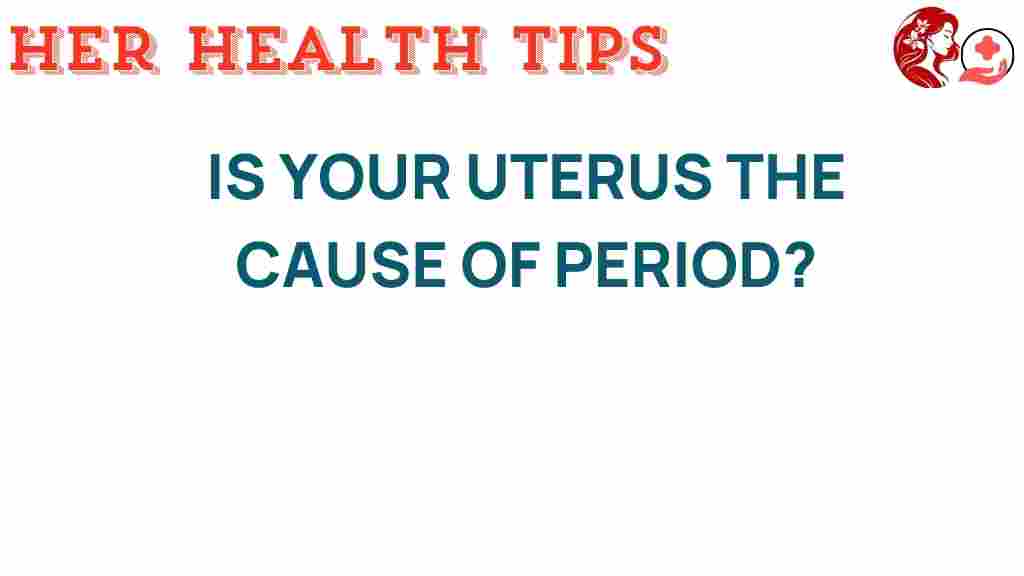Unraveling the Mystery: Is Your Uterus the Key to Period Pain?
Period pain, medically known as dysmenorrhea, is a common experience for many women during their menstrual cycle. While some women may experience mild discomfort, others endure debilitating pain that can significantly impact their daily lives. Understanding the role of the uterus in period pain is crucial for managing menstrual health and improving overall women’s wellness. In this article, we will delve into the connection between the uterus, period pain, and various gynecological issues, and explore ways to achieve hormonal balance for better reproductive health.
Understanding Your Uterus and Its Role
The uterus, often referred to as the womb, is a muscular organ located in a woman’s pelvis. It plays a vital role in menstruation, pregnancy, and childbirth. Understanding its anatomy and functions can provide insights into why some women experience more intense period pain than others.
- Anatomy of the Uterus: The uterus is divided into several parts: the fundus (top), the body (main part), and the cervix (narrower, lower part). The inner lining, known as the endometrium, thickens and sheds during the menstrual cycle.
- Menstrual Cycle: Each month, the uterus prepares for a potential pregnancy. When pregnancy does not occur, hormonal changes trigger the shedding of the endometrium, resulting in menstruation.
- Uterine Contractions: The uterus contracts to help shed the endometrial lining. These contractions are mediated by hormones like prostaglandins, which play a significant role in period pain.
The Connection Between the Uterus and Period Pain
Many factors contribute to the experience of period pain, and the uterus is at the center of this complex interplay. Here are some key aspects to consider:
- Prostaglandins: Higher levels of prostaglandins cause stronger uterine contractions, leading to increased pain. Some women may produce more prostaglandins, resulting in more severe period pain.
- Uterine Fibroids: These non-cancerous growths can develop in the uterine wall and lead to increased menstrual pain and heavy bleeding.
- Endometriosis: This condition occurs when tissue similar to the endometrium grows outside the uterus, causing significant pelvic discomfort and pain during periods.
- Pelvic Inflammatory Disease (PID): Infections in the reproductive organs can lead to scarring and inflammation, contributing to menstrual pain.
Step-by-Step Process: Understanding Your Period Pain
To address period pain effectively, it’s essential to understand its underlying causes. Here’s a step-by-step process for identifying the source of your discomfort:
Step 1: Track Your Symptoms
Start by maintaining a menstrual diary. Note the following:
- Date and duration of your period
- Intensity of pain (on a scale of 1-10)
- Associated symptoms (nausea, headaches, back pain, etc.)
- Any changes in lifestyle or stress levels
Step 2: Consult a Healthcare Provider
If your period pain is severe or has changed over time, it’s essential to consult a healthcare provider. They may recommend:
- A pelvic exam to assess for any abnormalities
- Ultrasound or MRI to check for fibroids or endometriosis
- Hormonal assessments to evaluate your hormonal balance
Step 3: Explore Treatment Options
Depending on the diagnosis, various treatment options may be available:
- Over-the-Counter Pain Relief: Nonsteroidal anti-inflammatory drugs (NSAIDs) like ibuprofen can help alleviate pain.
- Hormonal Birth Control: Hormonal contraception can regulate periods and reduce the severity of pain.
- Lifestyle Changes: Regular exercise, a balanced diet, and stress management techniques can improve menstrual health.
Troubleshooting Tips for Managing Period Pain
While understanding the uterus’s role in period pain is essential, there are several strategies you can implement to help manage discomfort:
- Heat Therapy: Applying a heating pad to the lower abdomen can help relax the muscles and reduce cramping.
- Dietary Adjustments: Incorporating anti-inflammatory foods such as omega-3 fatty acids, fruits, and vegetables can promote hormonal balance and reduce pain.
- Hydration: Staying well-hydrated can help ease bloating and discomfort.
- Mindfulness and Relaxation Techniques: Practicing yoga, meditation, or deep-breathing exercises can help manage stress and reduce pain perception.
Conclusion: Prioritizing Your Menstrual Health
Understanding the link between your uterus and period pain is crucial for managing menstrual health and overall reproductive health. By identifying potential gynecological issues and implementing effective management strategies, you can take control of your menstrual wellness.
If you’re experiencing severe period pain, don’t hesitate to seek professional help. Your reproductive health is vital, and there are many resources and treatments available to help you maintain hormonal balance and alleviate pelvic discomfort.
For further information on women’s health and menstrual issues, consider visiting the Women’s Health Organization. Remember, you are not alone on this journey, and prioritizing your wellness is the key to living a fulfilling life.
By unraveling the mystery of your uterus’s role in period pain, you can empower yourself to make informed decisions about your health and well-being.
This article is in the category Reproductive and created by HerHealthTips Team
